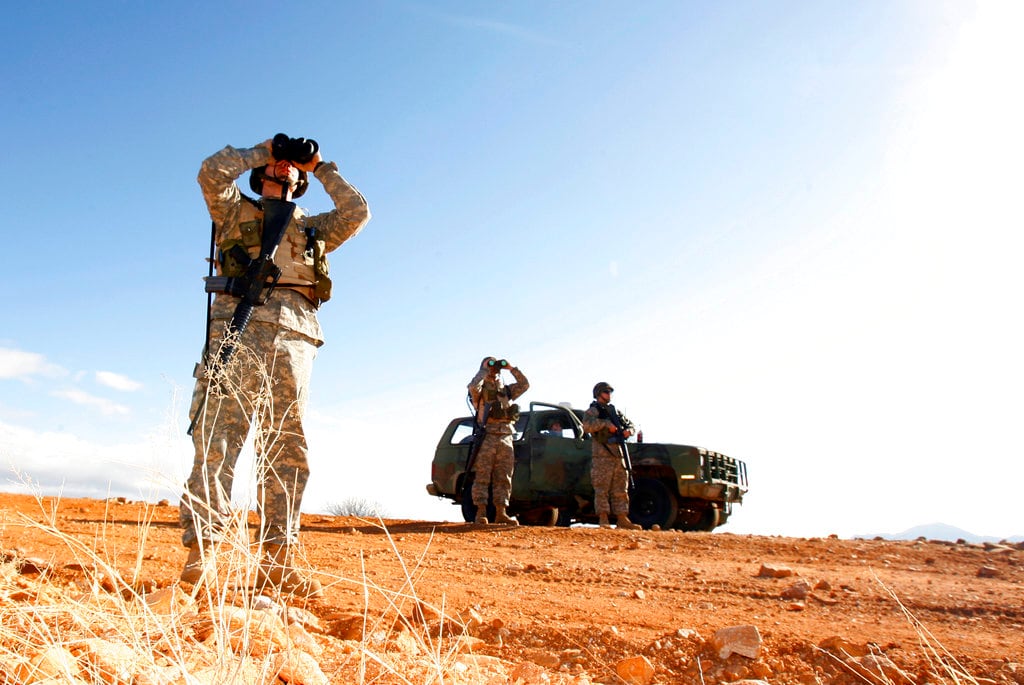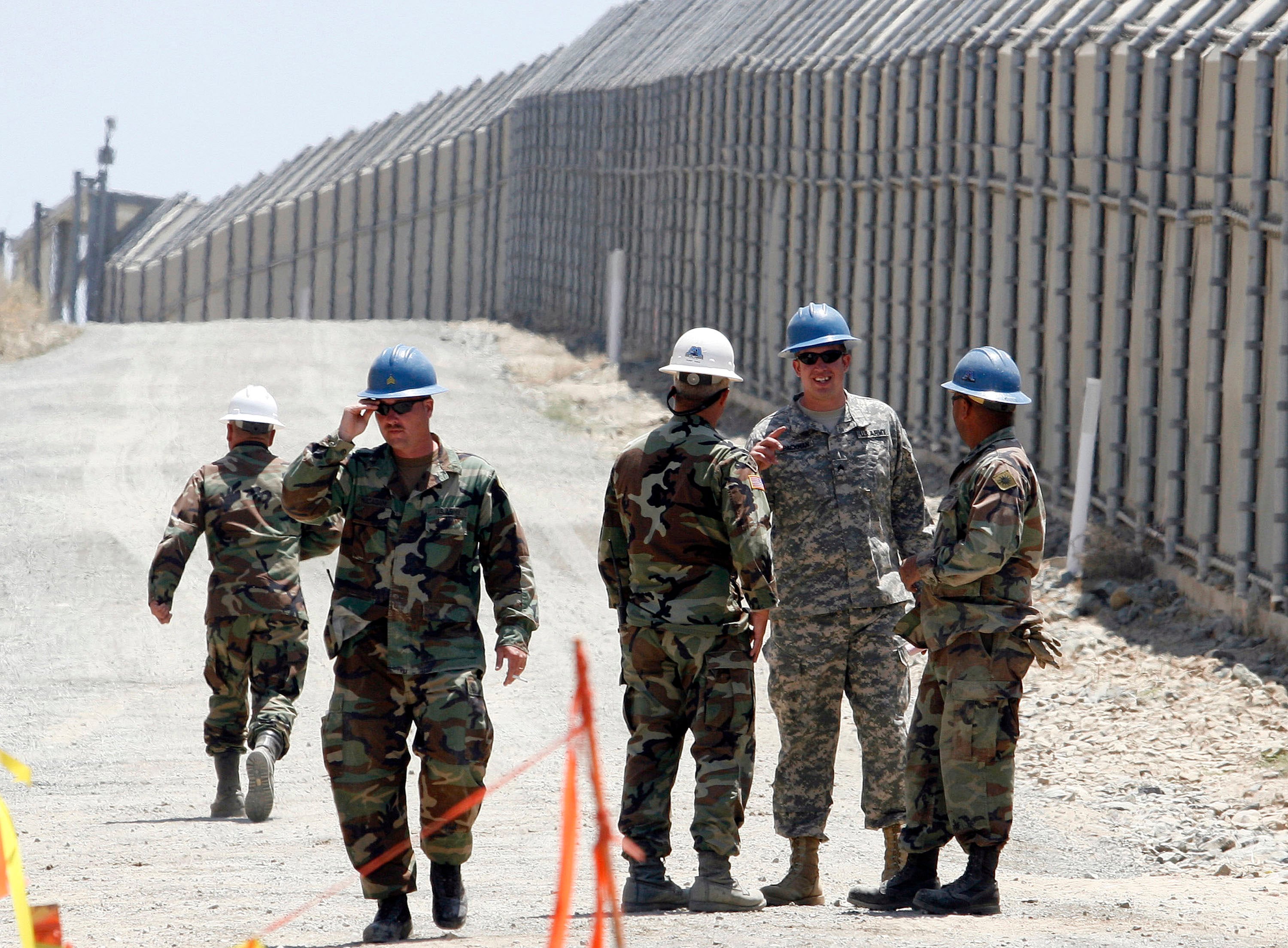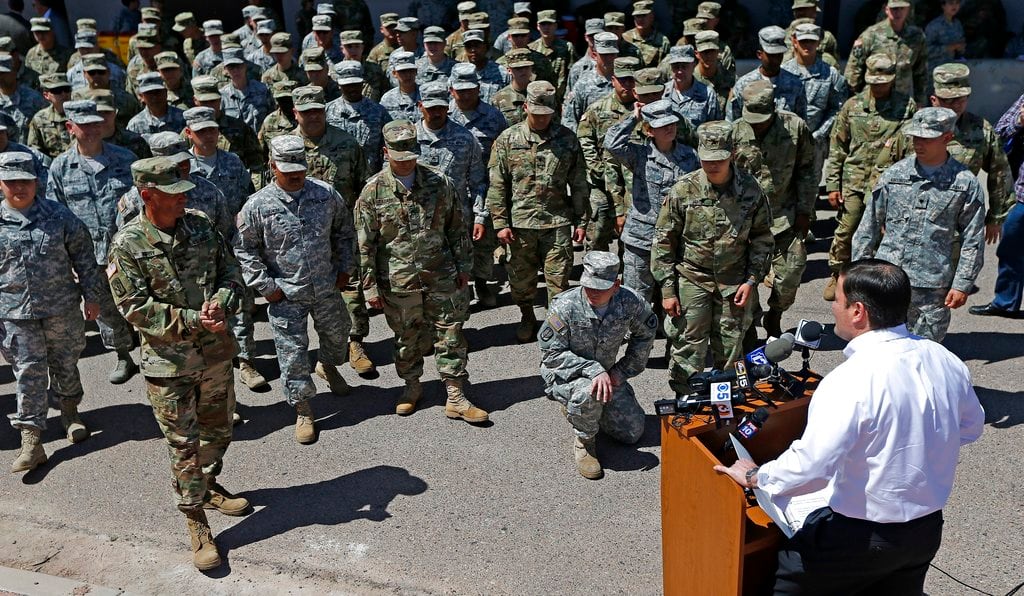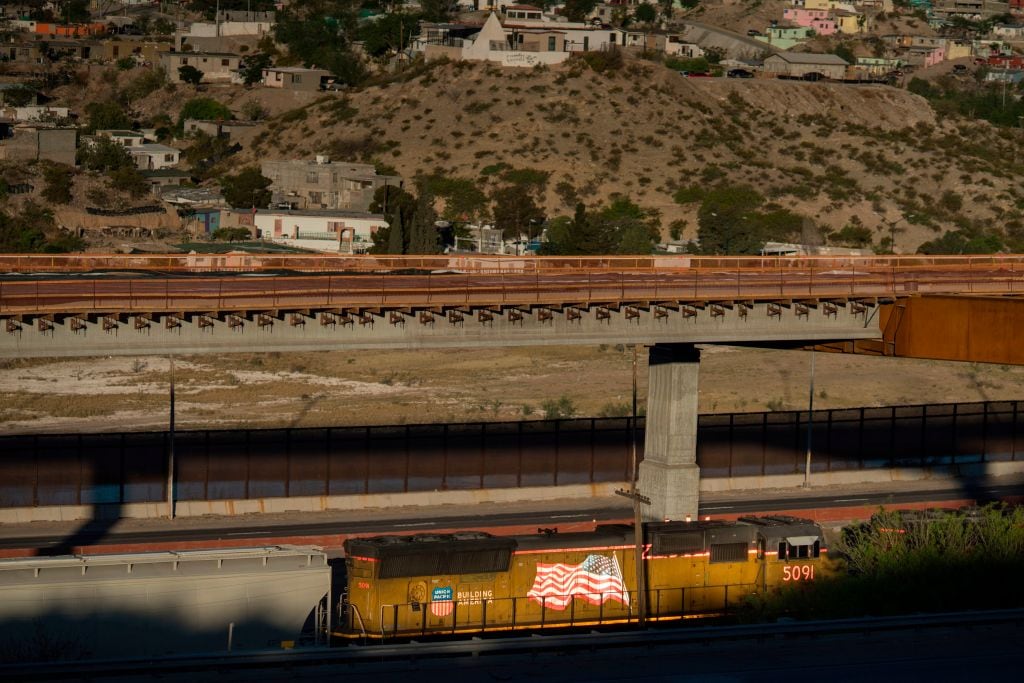HOUSTON — The Republican governors of three southwestern border states on Monday committed 1,600 National Guard members to the U.S.-Mexico border, giving President Donald Trump many of the troops he requested to fight what he’s called a crisis of migrant crossings and crime.
Arizona, New Mexico, and Texas all made new pledges that add up to almost half of the up to 4,000 troops Trump requested. Some Guard members started arriving at the border as states and the federal government officials continued to discuss what they will do.
The only holdout border state was California, led by Democratic Gov. Jerry Brown, who has not announced whether troops from his state’s National Guard will participate.
Brown has repeatedly fought with Trump over immigration policy. Under the federal law Trump invoked in his proclamation calling for National Guard troops, governors who send troops retain command and control over their state’s Guard members and the U.S. government picks up the cost.
RELATED

Trump said last week he wants to send 2,000 to 4,000 National Guard members to the border, issuing a proclamation citing “the lawlessness that continues at our southern border.”
“My administration has no choice but to act,” he wrote.
Administration officials have said that rising numbers of people being caught at the southern border, while in line with seasonal trends in recent years, require an immediate response.
RELATED

Apprehensions are still well below their historical trends during the terms of former presidents George W. Bush and Barack Obama, both of whom also deployed the Guard to the border.
In Mexico City, a caravan of Central American migrants that had been heading north stopped in the Mexican capital. The caravan had sparked furious criticism from Trump, followed days later by his National Guard border protection deployment plan. Organizers said they never intended to go to the U.S. border.

Arizona Gov. Doug Ducey told a group of soldiers preparing to deploy from a Phoenix military base that their “mission is about providing manpower and resources” to support agencies on the border and denied that there was a political motive.
“I don’t think this is a partisan issue or an identity issue,” he said. “You show me somebody who is for drug cartels or human trafficking or this ammunition that’s coming over a wide-open and unprotected border here.”
Texas Gov. Greg Abbott told San Antonio radio station KTSA that he would add about 300 troops a week until the total number reaches at least 1,000 troops.
Some Guard members will be armed if they are placed in potential danger, Abbott said, adding he wanted to downplay speculation that “our National Guard is showing up with military bayonets trying to take on anybody that’s coming across the border, because that is not their role.”
There is no end date for the deployment, Abbott said: “We may be in this for the long haul.”

New Mexico Gov. Susana Martinez’s office said that more than 80 troops would deploy later this week. They will be the first of an expected 250 Guard members from New Mexico to serve on the border.
South Carolina Gov. Henry McMaster, a Republican, offered to send members of his state’s Guard as well. South Carolina sent troops to the border during Operation Jump Start, the border deployment ordered by Bush in 2006.
In California, Brown’s spokesman, Evan Westrup, said Monday that state officials are still reviewing Trump’s troop request.
Trump has said he wants to use the military at the border until progress is made on his proposed border wall, which has mostly stalled in Congress. Defense Secretary James Mattis last Friday approved paying for up to 4,000 National Guard personnel from the Pentagon budget through the end of September.
Joel Villarreal, the mayor of Rio Grande City in Texas, said he did not agree with what he characterized as “the militarization of the border.”
“It’s not good for business, to be frank with you,” Villarreal said.
Christie reported from Phoenix. Associated Press writers Jeffrey Collins in Columbia, South Carolina; Susan Montoya in Albuquerque, New Mexico; and Kathleen Ronayne in Sacramento, California, contributed to this report.





